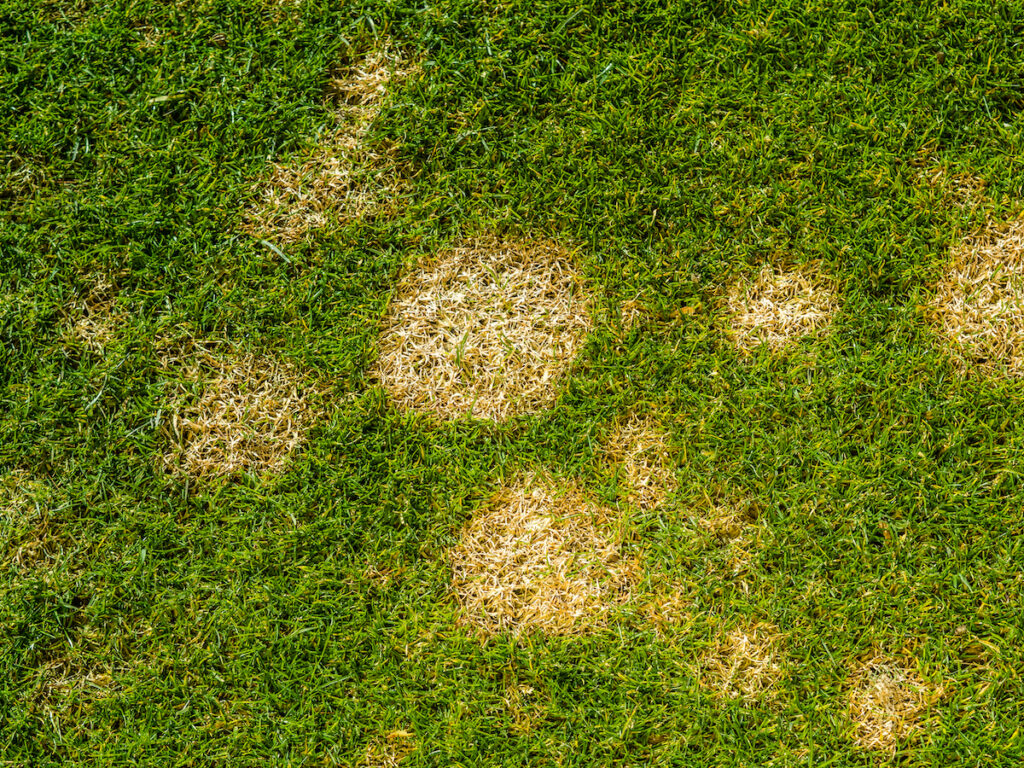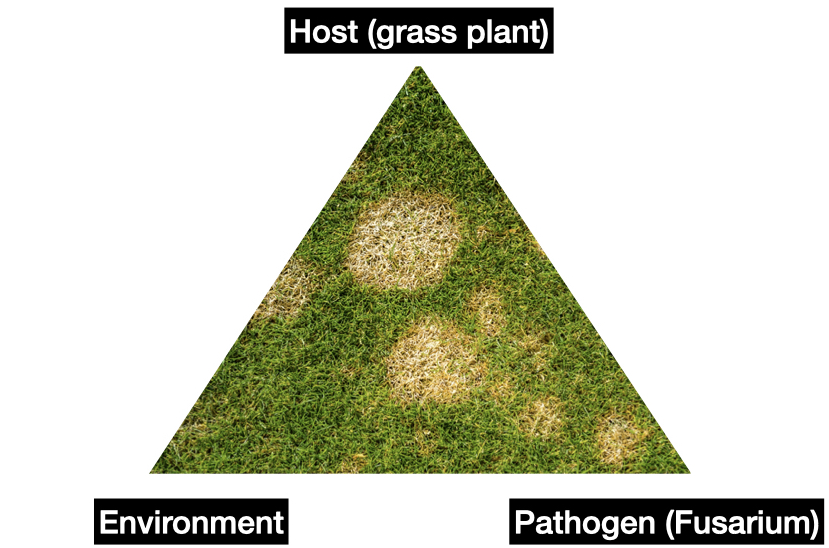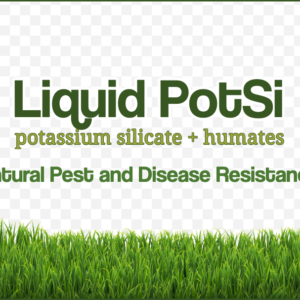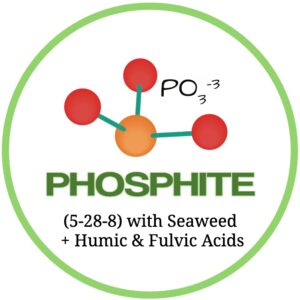The Disease Triangle is a fundamental concept in plant pathology that explains the interaction of three critical factors required for disease development:
- Host
- Pathogen
- Environment
When applied to turfgrass diseases like fusarium patch (caused by Microdochium nivale), the triangle provides a framework to understand and manage disease susceptibility. Here’s a detailed breakdown:
1. Host: The Grass Plant
The host refers to the turfgrass species or cultivar. Some grass types are inherently more resistant to Microdochium nivale, while others are more susceptible. Factors influencing host susceptibility include:
- Species and Variety:
- Fescues tend to be more resistant than perennial ryegrass or annual meadowgrass (Poa annua), which are highly susceptible.
- Nutritional Status:
- Over-fertilisation with nitrogen late in the growing season can lead to lush, soft growth that is more susceptible to fungal infection.
- Poor nutrient levels can weaken the grass, reducing its ability to fend off infection. Potassium levels, particularly need to be maintained.
- Turf Health:
- Stressed turf (from excessively close mowing, compaction, or water logging) has lower resistance to diseases.
- Dense thatch layers can harbour pathogens and promote infection.
- Long grass and surface debris (leaves, worm casts etc) can allow a microclimate to exist at the surface, which will encourage disease, especially in mild autumn/winter weather.
2. Pathogen: Microdochium nivale
The pathogen must be present for the disease to occur. Key characteristics of Microdochium nivale include:
- Survival:
- The pathogen can survive as mycelium or spores in plant debris, thatch, or soil.
- In cool, damp conditions, it can rapidly proliferate.
- Infectivity:
- Fungal spores can germinate and infect leaf tissue under favourable environmental conditions.
- Microdochium nivale thrives in temperatures between 0–8°C (cool-season fungus) but can remain active even outside this range if moisture is abundant.
3. Environment: Conditions for Disease Development
Environmental conditions often act as the trigger for fusarium outbreaks. Critical environmental factors include:
- Moisture:
- Prolonged leaf wetness from dew, rain, or poor drainage creates an ideal environment for fungal spore germination.
- Temperature:
- Fusarium patch is most active in the cooler months (autumn to early spring), particularly when temperatures are in the range of 0–15°C.
- Light Levels:
- Reduced sunlight (shorter days and shaded areas) increases surface wetness duration, favouring disease.
- Poor Airflow:
- Stagnant air reduces drying of leaf surfaces, encouraging fungal development.
- Management Practices:
- Practices such as late-season nitrogen application, excessive irrigation, heavy top-dressings and scalping during mowing can exacerbate environmental conditions conducive to infection.
Disease Triangle Applied: Fusarium Patch
For fusarium patch to develop, all three factors—susceptible host, pathogen presence, and favourable environment—must overlap:
- Susceptible Host: Lush annual meadowgrass dominated turf, or turf that has been left to grow long after autumn renovations. Also greens that have been left to grow out in autumn and subsequently maintained using a rotary mower instead of a cylinder. Low Potassium levels in autumn will also contribute to problems and reduce plant resistance.
- Pathogen Presence: Residual spores in thatch or soil.
- Favourable Environment: Cool, damp, and overcast conditions with extended leaf wetness.
If one of these factors is removed or minimised, the disease cannot occur or will be less severe. For example:
- Reducing thatch (host) lowers pathogen harbouring areas.
- Avoiding excessive nitrogen in autumn discourages soft growth (host).
- Improving drainage or dew removal (environment) limits moisture availability.
The Problem with Fungicides
- Stopping Progression of Fusarium:
- When applied correctly, fungicides (curative or contact) halt fungal activity by targeting specific biochemical processes in the pathogen.
- Systemic fungicides provide more prolonged protection as they are absorbed and translocated within the plant, while contact fungicides protect only the surface.
- Preventing Recurrence:
- Limited Long-Term Prevention: Fungicides are not a silver bullet for recurrence. They address the immediate infection but do not remove underlying conditions (e.g., moisture, poor nutrition, thatch) that predispose turf to future outbreaks.
- Residual Activity: Some fungicides offer a residual effect (e.g., weeks or months), but this is temporary. Once the active ingredient breaks down, the turf is again susceptible if conducive conditions persist.
- Rebound Effects:
- In some cases, fungicide use can suppress non-target microorganisms that naturally compete with pathogens. This disruption in the soil and leaf surface microbiome can create a vacuum, allowing pathogens like Microdochium nivale to resurge once the fungicide’s efficacy wanes.
Impact on Plant Immunity
- Natural Defence Mechanisms:
- Plants have natural defence systems, including structural barriers (cell walls, cuticle) and biochemical responses (production of phytoalexins or pathogen-related proteins).
- Over-reliance on fungicides can lead to a suppression of these mechanisms because plants face less “pressure” to activate their defences. In essence, fungicides may act as a crutch, potentially weakening the turf’s resilience over time.
- Hormonal Signalling and Stress Response:
- Research suggests that certain fungicides may interfere with hormonal pathways (e.g., salicylic acid, jasmonic acid) that regulate stress and disease responses. This can reduce the plant’s ability to “learn” and adapt to fungal threats.
Long-Term Problems Associated with Fungicide Use
- Pathogen Resistance:
- Repeated fungicide use can lead to resistant strains of Microdochium nivale. This is particularly problematic with systemic fungicides targeting a single biochemical pathway (e.g., DMI or QoI fungicides). Once resistance develops, fungicides lose effectiveness, leaving greenkeepers reliant on newer, often more expensive, formulations.
- Soil and Microbial Health:
- Fungicides can negatively impact beneficial soil microbes (e.g., decomposers, antagonists to fungi) that are critical for nutrient cycling, thatch degradation, and natural disease suppression.
- Over time, this reduction in microbial diversity can make turf ecosystems more reliant on chemical inputs for pest and disease management.
- Dependency Cycle:
- Fungicides can mask underlying issues (poor drainage, excessive thatch, nutrient imbalances), leading to a cycle where greenkeepers repeatedly apply chemicals to treat symptoms rather than addressing root causes.
Encouraging Immunity Through Cultural Practices
To break this cycle and foster healthier, more disease-resistant turf, greenkeepers can focus on practices that enhance the turf’s natural immunity:
- Balanced Nutrition:
- Avoid excessive nitrogen, particularly in the late season. Instead, supply adequate levels of potassium and micronutrients to strengthen cell walls and improve resistance.
- Thatch Management:
- Aeration, scarification, beneficial microbes and bio-stimulants help to reduce thatch layers where Microdochium nivale thrives.
- Microbial Inoculants and Organic Matter:
- Incorporating compost teas, fish hydrolysates, or microbial inoculants can restore beneficial soil microbes, improving disease suppression.
- Dew Management:
- Regular switching or brushing to remove surface moisture disrupts fungal germination cycles.
- Resistant Cultivars:
- Introducing more resistant species (e.g., fescues) into swards reduces susceptibility without chemical intervention.
- Induced Systemic Resistance (ISR):
- Products such as PotSi, seaweed extracts or chitosan can stimulate the turf’s natural defences by activating biochemical pathways involved in pathogen resistance.
Proactive Greenkeeping
A proactive greenkeeping approach that prioritises soil and turf health, addresses root causes of disease, and fosters plant immunity is not only more sustainable but often more cost-effective in the long run. By shifting the focus to prevention through cultural and biological methods, the reliance on fungicides can be minimised, creating healthier greens that perform well with fewer chemical inputs.
PotSi
Applying PotSi at the early signs of a fungal outbreak, such as fusarium patch, can have value, though its effectiveness depends on specific circumstances and how it is integrated into an overall turf management strategy. Here’s why it could be beneficial:
1. Strengthening Plant Cell Walls
PotSi provides silicon in a form that can be absorbed by plants. Silicon is not classified as an essential nutrient, but it plays a role in plant health by being deposited in cell walls as silica (SiO₂). This process:
- Increases the physical rigidity of cell walls.
- Makes plant tissue less palatable or penetrable to pathogens, including fungal hyphae attempting to invade leaf cells.
In turfgrass, these strengthened cell walls act as a physical barrier, potentially slowing the progress of fungal diseases.
2. Enhancing Stress Resistance
Silicon has been shown to help plants withstand abiotic stresses such as drought, salinity, and temperature extremes. During an outbreak, turf is often under additional stress (e.g., poor weather, high moisture, or nutrient imbalances). Silicon can mitigate some of these stresses, indirectly improving the plant’s ability to resist infection and recover from damage.
3. Improving Potassium Supply
Potassium, provided as part of potassium silicate, plays a key role in:
- Stomatal regulation, ensuring efficient water use and reducing waterlogging stress during wet conditions that favour fungal growth.
- Strengthening plant tissue through its role in osmotic regulation and enzyme activation.
Adequate potassium levels enhance the turf’s resilience to pathogens by:
- Thickening the cuticle (the outer waxy layer of leaves), reducing pathogen penetration.
- Supporting energy-intensive processes involved in natural defence mechanisms.
4. Potential Role in Induced Systemic Resistance (ISR)
There is evidence that silicon can act as a signalling molecule to trigger induced systemic resistance (ISR). While not as direct as fungicides, ISR mechanisms activate the plant’s defence pathways, such as the production of:
- Phytoalexins (antimicrobial compounds).
- Pathogenesis-related proteins that attack invading pathogens.
This systemic activation can limit the spread of fungal infections, particularly if silicon is present in the plant’s tissue when the outbreak begins.
5. Reduction of Surface Wetness
Potassium silicate solutions, when applied as a foliar spray, can leave a residue that may reduce surface wetness. Drier leaf surfaces create less favourable conditions for spore germination and fungal growth, particularly for pathogens like Microdochium nivale that thrive in moisture.
Timing and Application Considerations
- Early Application:
- For maximum benefit, potassium silicate should be applied proactively or at the very early signs of an outbreak. Silicon needs time to be absorbed and deposited in tissues, so its immediate effects during an active outbreak may be limited.
- Regular applications throughout the growing season can ensure silicon levels are sufficient in plant tissue when an outbreak occurs.
- Application Method:
- Foliar sprays are most effective for delivering potassium silicate to the leaf surface and ensuring uptake. However, it can also be applied to the soil to build silicon reserves for root uptake.
- Integration with Other Strategies:
- Potassium silicate is not a standalone treatment for fungal outbreaks. It works best as part of an integrated disease management programme that includes good cultural practices (e.g., aeration, thatch reduction).
Potential Limitations
- Limited Curative Effect:
- Silicon’s benefits are more preventive than curative. If a fungal outbreak is already well established, its impact may be limited compared to fungicides or other direct interventions.
- Timing of Results:
- While silicon strengthens plants over time, it may not provide immediate protection or recovery during an active outbreak. Applying PotSi every 6 weeks throughout the year can help to build plant resilience to disease and other stresses.
- Environmental Factors:
- Silicon uptake is influenced by plant health and environmental conditions. Stressed or damaged turf may absorb silicon less efficiently.
Applying a PotSi at the early signs of an outbreak has value as a preventive and supplementary measure, particularly for strengthening plant defences and reducing the severity of infection. However, its benefits are most pronounced when used as part of a long-term strategy to enhance plant health and resistance, rather than as a reactive solution to advanced disease symptoms.
If used proactively alongside cultural practices, potassium silicate can contribute to reduced reliance on fungicides and promote healthier, more resilient turf in the long term.
Phosphite and Disease Resistance
Further Reading
The following research studies might be useful in expanding your understanding of the material discussed in this article:
Several studies have investigated the role of silicon, particularly in the form of potassium silicate, in enhancing turfgrass resistance to fungal diseases. Notable research includes:
- “Silicon in the Life and Performance of Turfgrass” by Lawrence E. Datnoff (2005): This study examines silicon’s impact on turfgrass health, highlighting its ability to suppress diseases like gray leaf spot, dollar spot, and brown patch in species such as creeping bentgrass, bermudagrass, perennial ryegrass, and St. Augustine grass.
- “Silicon in Plants Mitigates Damage Against Pathogens and Insect Pests” (2023): This chapter explores silicon’s role in enhancing plant resistance to fungal diseases, detailing mechanisms such as the formation of physical barriers and the activation of plant defense responses.
- “Silicon Uptake and Transport Mechanisms in Plants: Processes, Applications and Challenges in Sustainable Plant Management” (2024): This review provides insights into how silicon uptake enhances plant resilience to biotic stressors, including fungal diseases, and discusses its potential applications in sustainable plant management.
These studies collectively suggest that silicon applications can bolster turfgrass defences against fungal pathogens, offering an additional strategy for disease management.





Excellent article John. Really appreciate how things are explained.
Hi John
Would this go down well with the phosphite too, which in turn will preventing pathogens like fusarium from damaging the plant, providing we are proactive rather than waiting for the pathogens to get a hold on the green?
Regards
Ian
Hi Ian
Yes, that is a good strategy to follow
Regards
John